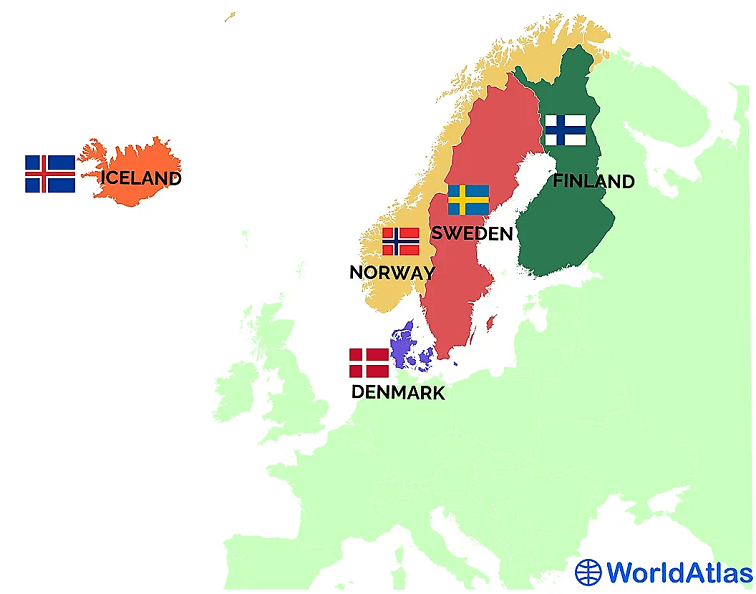
The Polar Silk Road and China’s Arctic Policy
The territory of the BRICS nation Russia, covers around 53% of the total Arctic Ocean coastline. In the last few years the warming climate has been melting the sea-ice caps and has made parts of this patch of ocean available for shipping navigation the first time in human history. The Northern Sea Route is being developed by Russia, involving projects costing hundreds of billions of dollars. China too sees this development as potentially of great strategic significance for creating a Polar Silk Road.
The Northern Sea Route could become a major alternative shipping lane for Russian energy and minerals. Already it is being seen by as potentially making commercialshipping between Europe and Asia faster and far cheaper than any existing route. Russia’s dominance in the Arctic Region and the economic sigificance of the Northern Sea Route for Russia and Chinais discussed by Amit Sengupta in the linked video.
Of course, U.S. attempts to excert global hegemony is spilling over into the Arctic, which has been heating up in recent years, especially in the Arctic-Atlantic linkage zone where the five Nordic countries (Denmark, Sweden, Norway, Finland, and Iceland) are located.
China regards the Nordic countries as the western end of the Chinese “Polar Silk Road,” where China has important shipping, scientific and strategic interests. The “Polar Silk Road” is of great significance to China’s Belt and Road initiative and connectivity between Asia and Europe.

Core Values of the China’s Arctic Policy
According to Guo Peiqing and Chen Huiwen of the Ocean University of China, writing recently for the Arctic Institute:
“As expressed in China’s 2018 official Arctic Policy, Beijing participates in Arctic affairs on the basis of the principles of mutual respect, cooperation, win-win and sustainability, abides by the universally recognized norms of international law, and has the right to participate in Arctic governance. Expelling Chinese power from the Arctic and preventing China from gaining a foothold in the Nordic region is one of the goals of U.S. Arctic strategy. In recent years, the U.S. has strengthened its control over the Nordic countries through military and intelligence cooperation, constantly forced the Nordic countries to disengage from China and attempting to exclude China from the Nordic region while controlling the Nordic countries at the same time. But the complementary economic structures between the Nordic countries and China as well as the attractiveness of Chinese funding and infrastructure technology makes disengagement impractical. The Nordic countries will lose diplomatic autonomy if they blindly follow the US instruction. They will miss the opportunity to ride the Chinese development train.”
The U.S. aims to prevent China from transforming economic benefits into political influence, and continues to incite the Nordic countries to side with it against China. This strategy has taken on greater importance with the U.S.-led NATO war with Russia over Ukraine.
However, as Guo Peiqing and Chen Huiwen point out:
“The strengthening of economic, trade and cultural exchanges between China and the Nordic countries not only greatly benefits the economic and social development of the Nordic countries, but more importantly provides the Nordic countries with more options, gives the Nordic countries more strategic leverage and greatly enhances the position of the small Nordic countries in the international arena.”
“Given the complementary economic structures between the Nordic countries and China, the Nordic countries keep increasing demand for infrastructure, a larger market for their resources and high-tech manufacturing. In recent years, bilateral economic and trade relations between China and the Nordic countries have grown steadily, with China being the largest trading partner of the five Nordic countries in Asia. Chinese investments to the Nordic countries increase year by year. China’s participation in Arctic development and construction brings capital, technology and infrastructure to the Nordic countries, giving the Nordic people tangible and predictable benefits.”
*** This video was made prior to the NATO-Ukraine war with Russia – clearly Russia today cannot be said to be keeping a “low profile”
Sources:
The Artic Institute, Chinese Perspective on the Arctic and its Implication for Nordic Countries, June 20, 2023. https://www.thearcticinstitute.org/chinese-perspective-arctic-implication-nordic-countries/
UPSC Current Affairs Video, Russia’s dominance in the Arctic Region, Dec 23, 2020 https://youtu.be/Ge1UoavcdeM
Xinhua, Jan 26, 2018. Full text of the white paper: China’s Arctic Policy. https://english.www.gov.cn/archive/white_paper/2018/01/26/content_281476026660336.htm